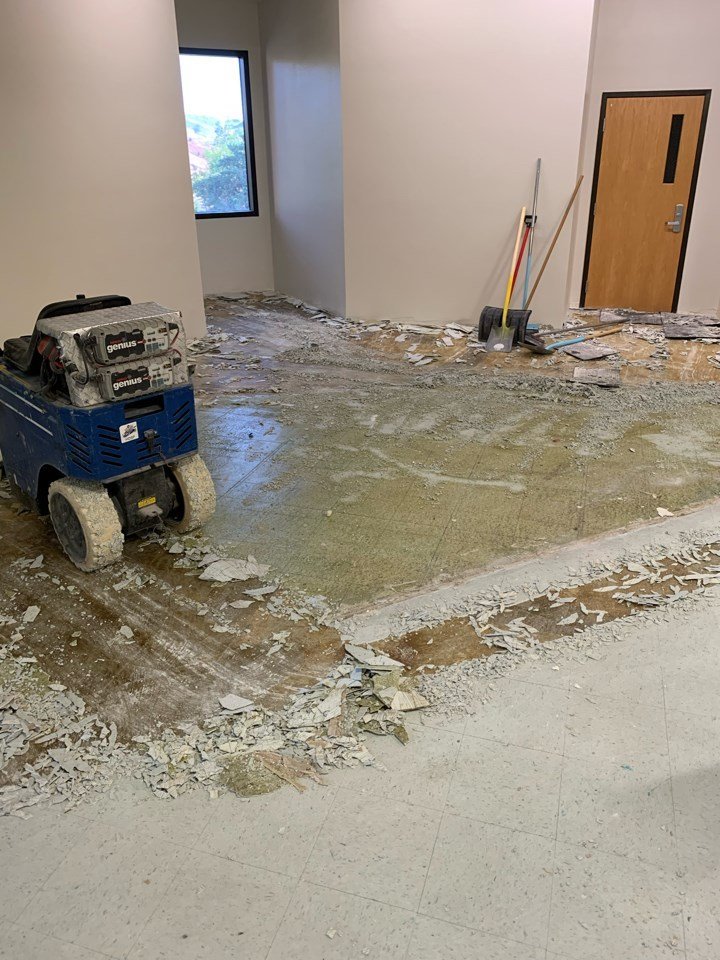Staining, Dying and Sealing Concrete
Are you dreaming of transforming that plain-looking concrete floor in your home or business premise into a beautiful, high-impact area? Look no further; we have the perfect solution for you: concrete staining and dying, followed by sealing. This technique is not only for aesthetic enhancement but also provides a durable, long-lasting surface that requires minimal maintenance.
Understanding Concrete Staining and Dying
Concrete staining involves the application of acid- or water-based stains to change the color of concrete surfaces. These stains penetrate the concrete and chemically react with the cement, imparting a distinctive and permanent color pattern that can mimic natural stone, wood, or even leather.
On the other hand, concrete dying is a non-reactive method that utilizes water- or solvent-based dyes to penetrate the concrete and color it. Dyes offer more vibrant color choices than stains, providing a broader palette for artistic expression.
The Process: Staining/Dying and Sealing Concrete
Step 1: Surface Preparation
The first step involves cleaning the concrete surface to remove dust, oil, grease, or any other contaminants that might prevent the stain or dye from penetrating effectively. The surface can be cleaned using a high-pressure washer, or for interior floors, a floor scrubber with a mild detergent might be used.
Step 2: Applying the Stain or Dye
Once the surface is clean and dry, the stain or dye is applied. The method of application may vary; some may be sprayed on, others brushed or rolled. In most cases, two coats are applied to ensure even coverage. For an artistic touch, multiple colors can be applied, using techniques such as layering and marbling to create unique effects.
Step 3: Neutralization and Cleaning (for Acid-Based Stains)
If an acid-based stain is used, the surface must be neutralized after the staining process. This is usually done with a solution of baking soda and water. The surface is then rinsed thoroughly and allowed to dry before any further steps.
Step 4: Sealing the Concrete
The final step is to seal the concrete. Sealing not only enhances the appearance of the stained or dyed concrete but also protects it from wear and tear, and stains. Different types of sealers are available depending on the desired finish (glossy, matte, etc.) and where the concrete is located (indoors, outdoors, high traffic area, etc.).
Advantages of Staining/Dying and Sealing Concrete
Staining and dying concrete has several advantages for both commercial and residential settings. They provide an affordable way to enhance the aesthetics of concrete floors, adding a touch of luxury without the cost of installing natural stone or hardwood. The resultant surface is easy to clean and maintain, resistant to heavy traffic, and if sealed correctly, resistant to moisture and stains.
Whether you're a business owner looking to give your commercial space a modern, appealing look, or a homeowner wanting to improve the look and durability of your concrete floors, staining, dying, and sealing your concrete can be an excellent investment.
Remember, while DIY is possible, for best results, especially in commercial settings, it is often best to hire professionals who have the knowledge, experience, and equipment to properly prep, stain/dye, and seal your concrete.
Conclusion:
In the world of concrete enhancement, staining and dying offer infinite possibilities to transform your dull concrete into a stylish and durable surface. Seal it correctly, and you'll have a surface that withstands the test of time, preserving the beautiful new look of your concrete for years to come. So go ahead, explore this opportunity to bring a breathtaking change to your home or business premises, adding value, aesthetics, and functionality. Whether it's the earthy tones of a stained concrete floor mimicking natural stone, or the vibrant hues of a dyed concrete surface bringing a unique artistic touch, the choice is yours. Let the transformation of your concrete surfaces through staining, dying, and sealing open new doors for your interior and exterior design adventures.
LET’S WORK TOGETHER
Related Posts



